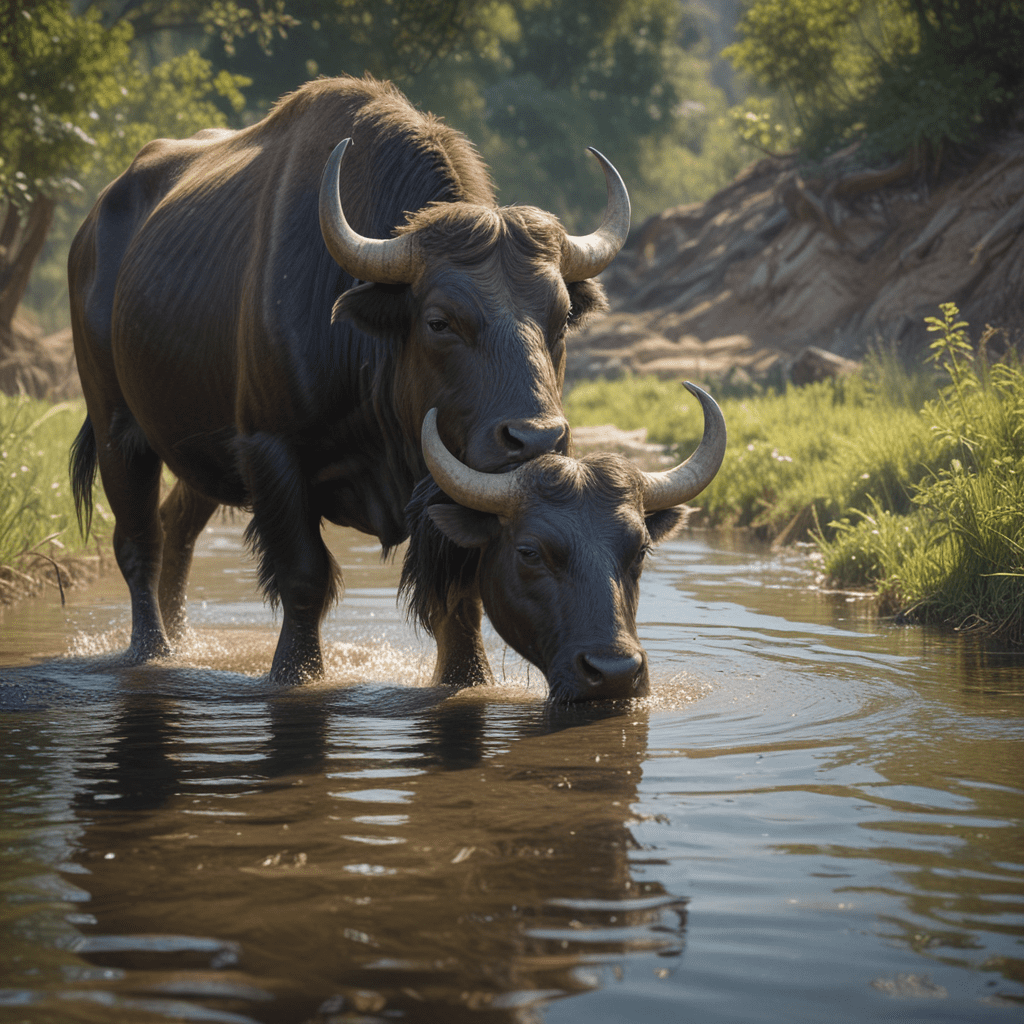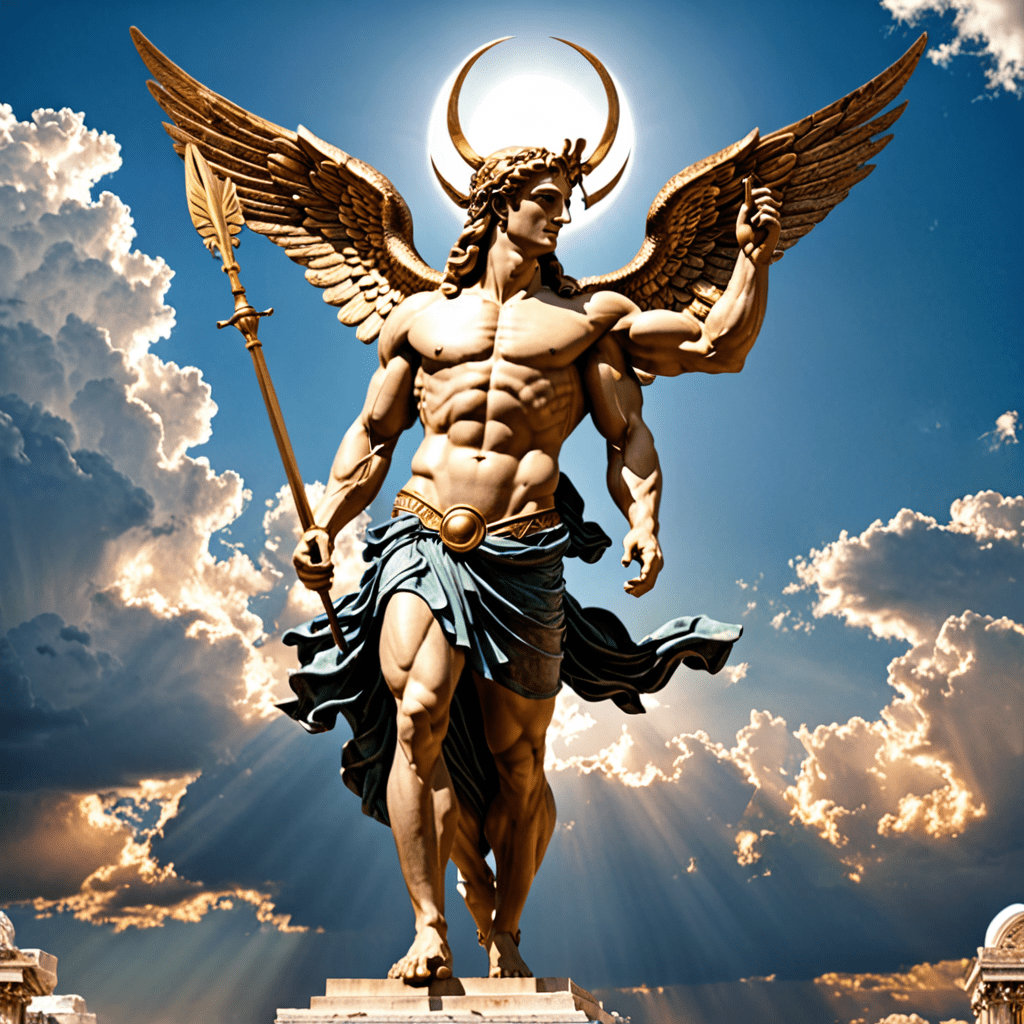1. Introduction to the Water Buffalo in Native American Mythology
The water buffalo, a majestic and enigmatic creature, holds a profound place within the rich tapestry of Native American mythology. Throughout the vast expanse of the continent, various tribes have woven intricate tales and beliefs around this revered animal. From its origins in the celestial realm to its significance as a guardian spirit, the water buffalo embodies a potent force in Native American spirituality and culture.
2. The Origin Story: From the Celestial Herd to the Earthly Plains
In the realm of Native American myths, the water buffalo's genesis is often traced back to the celestial herd that roamed the heavens. According to these tales, a great spirit created these magnificent creatures, imbuing them with wisdom, strength, and a deep connection to the natural world. Driven by an unquenchable thirst for knowledge and adventure, a group of water buffalo descended from the heavens, seeking to explore the earthly realms.
3. Physical and Spiritual Characteristics of the Water Buffalo
In Native American mythology, the water buffalo is revered for its formidable presence and exceptional traits. Its massive frame, adorned with thick fur and imposing horns, conveys strength and resilience. Physically, these creatures are associated with the element of water, as their name suggests. They are often depicted as inhabiting watery environments, where they serve as guardians of freshwater sources and ensure the health of aquatic ecosystems.
4. The Water Buffalo as a Guardian Spirit and Totem Animal
For various Native American tribes, the water buffalo holds a sacred place as a guardian spirit or totem animal. Individuals who align with the water buffalo's energy are believed to possess traits such as determination, perseverance, and a deep connection to the natural world. The buffalo's protective nature also extends to its connection with women and children, providing guidance and support in times of need.
5. Water Buffalo Clan and its Cultural Significance
In some Native American tribes, clans have emerged based on the veneration of the water buffalo as an ancestral spirit. Members of water buffalo clans embody the values and traits associated with this revered creature. They often serve as spiritual leaders, healers, and protectors within their communities, carrying on the legacy of the water buffalo's wisdom and strength through generations.
6. The Water Buffalo in Creation Stories and Prophecies
The water buffalo frequently appears in Native American creation stories and prophecies, serving as a symbol of the natural world's power and resilience. In some tales, the buffalo represents the first living being or the creator of the earth itself. Other prophecies depict the buffalo as a guardian of the land, protecting it from harm and ensuring its abundance.
7. Legends and Tales Surrounding the Water Buffalo
Numerous legends and tales have been woven around the water buffalo, showcasing its wisdom, strength, and connection to the spirit world. One widely known story recounts how a water buffalo guided a group of lost hunters through a treacherous forest, leading them to safety. In another tale, a water buffalo is said to have granted a young woman the gift of healing, enabling her to care for her people.
8. The Water Buffalo in Rituals and Ceremonies
The water buffalo holds a central place in many Native American rituals and ceremonies. Its presence often symbolizes purification, protection, and the renewal of life. Buffalo dances, for instance, are performed to honor the animal's spirit and to seek its blessings. In some tribes, water buffalo skulls are used in ceremonies to connect with the ancestors and to invoke their guidance.
9. Water Buffalo Symbolism and Meaning in Native American Art
The water buffalo's profound symbolism is reflected in various forms of Native American art. Its image appears on pottery, weavings, carvings, and paintings, capturing its essence and conveying its significance. Buffalo horns, in particular, are often depicted as symbols of strength, power, and virility. By incorporating these symbols into their art, Native American artists honor the water buffalo's spirit and perpetuate its cultural significance.
10. Conclusion: The Enduring Legacy of the Water Buffalo in Native American Mythology
The water buffalo remains an integral part of Native American mythology, embodying strength, resilience, and the interconnectedness of all living things. Through origin stories, legends, rituals, and art, the water buffalo's legacy continues to inspire and guide Native American communities. Its enduring presence serves as a reminder of the profound respect and reverence accorded to the natural world within Native American traditions.
FAQs
1. What tribes primarily revere the water buffalo in their mythology?
Various Native American tribes across the continent hold the water buffalo in high regard, including the Lakota, Cheyenne, Blackfoot, and Navajo.
2. What is the significance of the water buffalo’s connection to water?
In Native American mythology, the water buffalo's association with water symbolizes its role as a guardian of freshwater sources and an embodiment of the life-giving properties of water.
3. How is the water buffalo perceived in creation stories and prophecies?
In creation stories and prophecies, the water buffalo is often depicted as a powerful symbol of creation, the first living being, or a guardian of the earth.
4. What role does the water buffalo play in Native American rituals and ceremonies?
In rituals and ceremonies, the water buffalo represents purification, protection, and the renewal of life. Buffalo dances and the use of buffalo skulls are common practices to honor its spirit and invoke its blessings.
5. How is the water buffalo depicted in Native American art?
The water buffalo's image appears in various forms of Native American art, such as pottery, weavings, carvings, and paintings. Its horns, in particular, symbolize strength, power, and virility.




